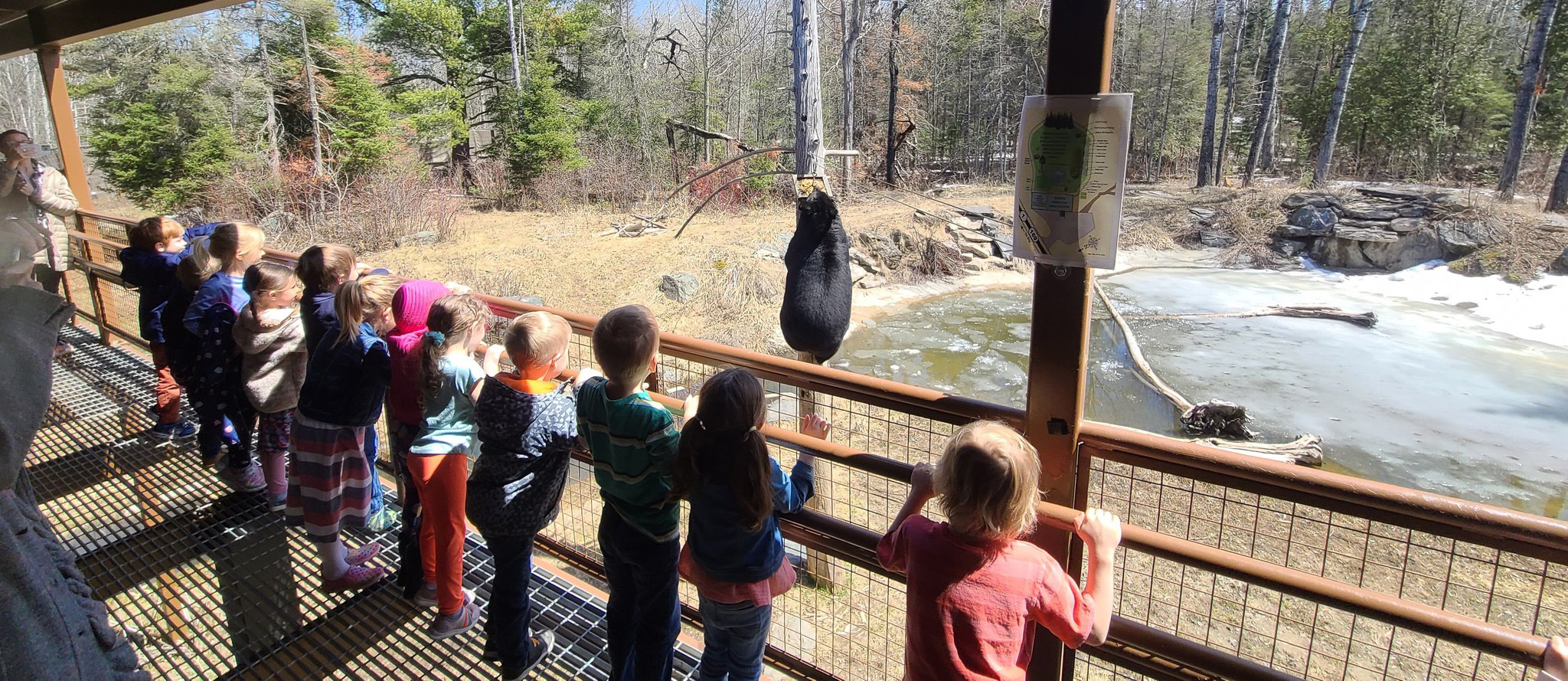
Bear News – MID AUGUST
Bear News mid- August
Bear weights and bears eat honey… don’t they?
Lucky bear – 437, Holly 297, Tasha 350.
Many times a season we are posed with the question, “Do you give your bears honey?” The quick answer is no, but it leads into a cartoon story that almost everyone knows and it goes like this: “How many of you have heard of Winnie the Pooh?” Everyone raises their hands. “And what is his favorite food?” The answer they give is “Honey!” We then continue with, “He has been lying to you your whole life. Although he may love honey, black bears do not typically eat honey.” (Insects and animal matter are less than 10% of the annual black bear diet around Ely and across most of North America ) they eat the larvae or pupae and eggs which are rich in protein and fat.
The black bear (Ursus americanus) in northern Minnesota will eat the pupae but they don’t eat honey because it is not available. The area has bumble bees, not honey bees.
There are 18 of the 24 species of bumble bee in northern Minnesota. These bees do not produce honey. One of the bumble bees we see mostly collecting nectar from the wild flowers is the brown-belted bumble bee (Bombus griseocollis). 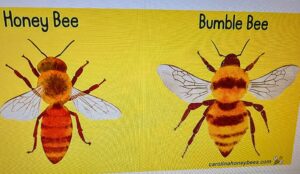
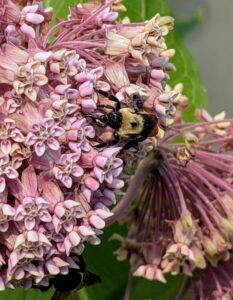
Another bumble bee common to this area is the rusty patched bumble bee (Bombus affinis) which is the state bee of Minnesota. Although they do not produce honey, they are pollinators.
In some instances around Ely, there are honey bee producers that sell honey. The beekeepers, or apiculturists, protect their hives with an electric fence.
There are a couple of bear species that actually do eat honey as a main food source.
One is the Asiatic bear (Ursus thibetanus) and the other is the Sun bear (Helarctos malayanus). Honey is a primary food source rich in fat and delicious.
Our bears contend with bumble bees as they walk through clover and flowering plants. The bears sometimes step on them, which in turn makes the bee sting them. Bumble bees are highly opposed to being stepped on.
The pads of the bear’s feet are soft, leathery, wrinkled and going into the late fall somewhat calloused. Despite this, the stinger does penetrate, which can cause the bear extreme pain.
Lucky is selectively careful while walking in the clover, as he has been stung several times by stepping on them. It’s not just Lucky; the females also have been stung while walking through the clover or high grasses.
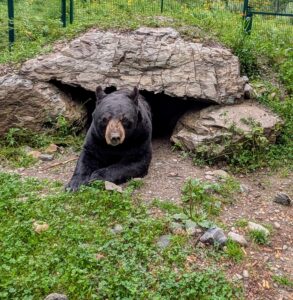
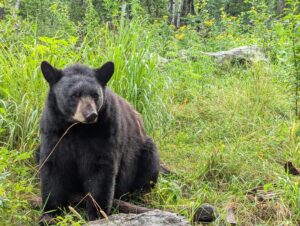
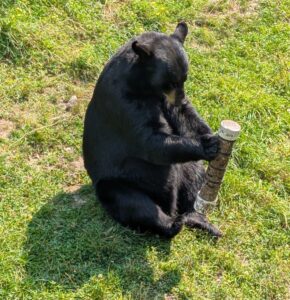
The protein extracted by the bears eating the insect larvae and bee pupae are a necessary part of their diets. It helps build muscle, skin, hair and tissue. It helps with energy and contains antibodies to fight infections.
We replicate by giving the bears a raw egg every morning. They can also forage in the enclosure for ant pupae, grubs in logs and ground hornet nests.
Thank-you for all you do for our bears. At this time I am in need of the following foods from our Amazon wishlist: cranberries,dried cherries, pecans and unsalted raw chopped almonds. The chopped almonds are a new item but works well for our spreads with the cranberry and dried cherries. https://bear.org/support-us/
Again thank-you,
Sharon Herrell, Sr. Bear Keeper
We are a 501(c)(3) non-profit that relies entirely on the support of visitors, merchandise sales and people like you. We do not receive any state or federal funding.
Help support our mission.
Donate Now